Quinoline (C9H7N) is a two-ring aromatic compound structurally analogous to naphthalene, but having a nitrogen atom in place of a carbon atom adjacent to the ring fusion (see structure in figure 1). Phenanthridine (C13H9N) is a three-ring aromatic compound structurally analogous to phenanthrene, but having a nitrogen atom in the outside edge of the central ring (see
structure in figure 7). Both of these compounds have been detected in meteorite extracts. In contrast to simple carbon- and hydrogen-containing PAHs that do not interact strongly with H2O (Sandford et al. 2004, Bernstein et al. 2005, in preparation), the nitrogen atom(s) in these nitrogen heterocycles are potentially capable of hydrogen bonding with H2O or CH3OOH. This could lead to more interesting and complicated spectra for these molecules when they are present in astrophysical ices, particularly H2O.
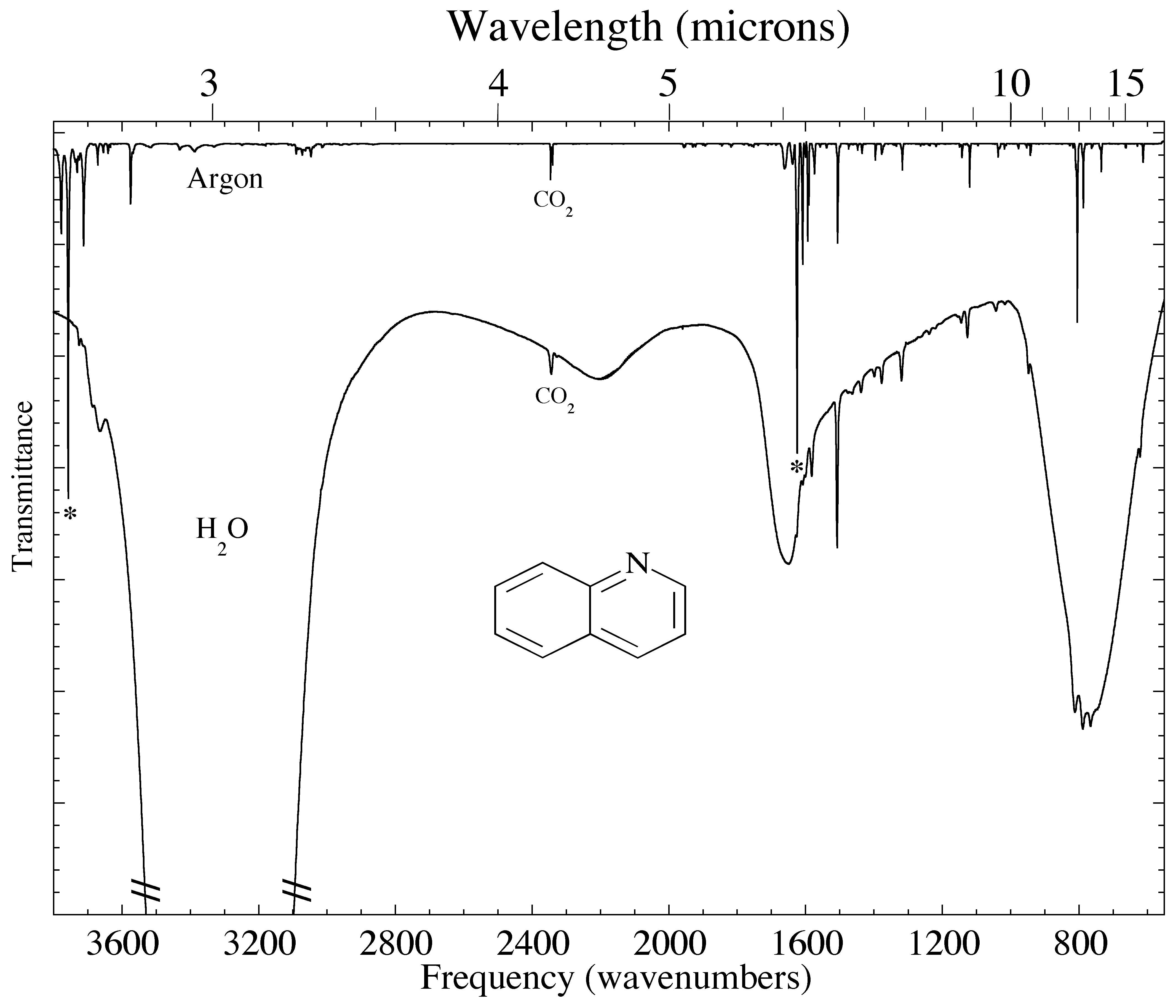
Figure 1. The 3800-550 cm-1 (2.63-18.18 microns) IR spectra of Quinoline (C9H7N) isolated in an argon matrix
(Ar/C9H7N > 1000; above) and in solid H2O (H2O/C9H7N = 20; below). The large
broad absorptions in the (lower) spectrum centered near 3250, 2200, 1600, and 750 cm-1 (3.08, 4.5, 6.25 and 13.3 microns) are caused by the amorphous solid H2O at 15 K. Because H2O absorptions dominate the spectrum some of the quinoline features are obscured. An * below a band in the argon matrix spectrum indicates the presence of a group of peaks caused by, or with a large contribution from, matrix isolated
H2O.
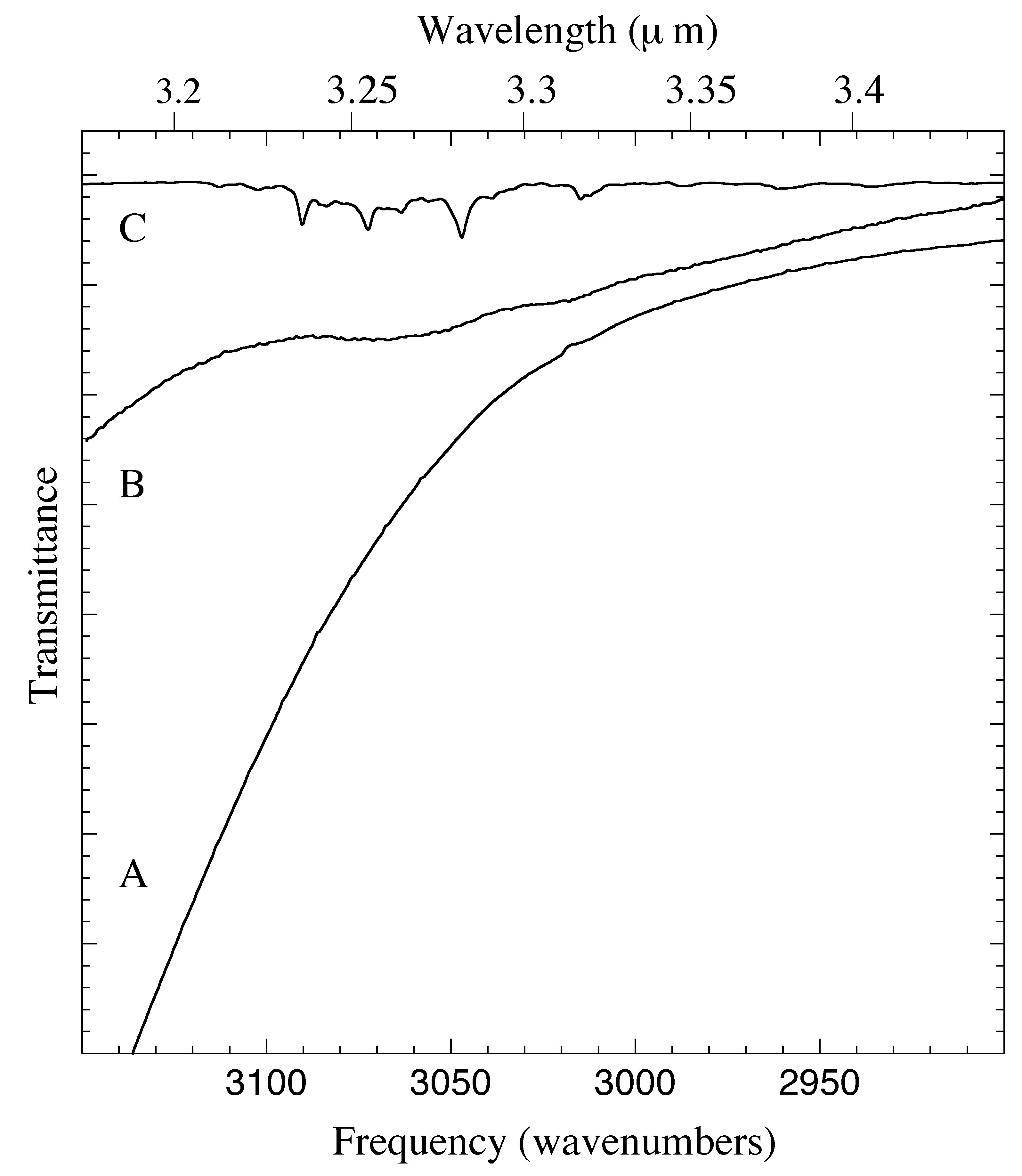
Figure 2. The 3150-2900 cm-1 (3.175-3.448 microns) IR spectra, from bottom to top, of (A) quinoline in solid H2O at 15 K (H2O/C9H7N = 20) (B) quinoline in H2O minus 75% of a comparable spectrum of pure H2O, and (C) quinoline isolated in an argon matrix (Ar/C9H7N > 1000) at 15 K. Although the weak aromatic C-H absorptions in trace A are obscured by the long wavelength wing of the 3 micron H2O, the partial subtraction of pure H2O reveals the C-H stretches of quinoline in H2O as broad absorptions in trace B spanning the range from ~3090 to ~3025 cm-1 (3.24-3.3 microns), as opposed to the distinct sharp absorptions of quinoline isolated in argon (trace C). Such broad absorptions are to be expected since H2O tends to interact strongly with neighboring molecules.
The positions and profiles of these absorptions are broadly consistent with past astronomical observations. However, they are not all the same. It is interesting to note that there is a difference in the position of the aromatic C-H stretches between young stellar objects (YSOs) where it is consistently 3.25 microns (Brooke et al. 1999) and a galactic center line of sight (GCS 3) where it was 3.28 microns (Chiar et al. 2000). If the
C-Hs of quinoline in H2O appeared in an astronomical spectrum blended together as a single broad feature it would be centered at ~3.28 microns essentially the same position as that observed by Chiar et al (2000), towards GCS 3, but with a FWHM twice that of the astronomical absorption. On the other hand, if the stronger shorter wavelength feature is considered separately, its center is very close (~0.01 microns) to those of YSOs (Brooke et al. 1999).

Figure 3. The 1750-1550 cm-1 (5.71-6.45 micron) IR spectra of quinoline (A) isolated in an argon matrix (Ar/C9H7N > 1000) and (B) in solid H2O (H2O/C9H7N = 20) at 15 K. The ensemble of peaks in the upper spectrum contains major contributions from matrix isolated H2O, making it unclear if any quinoline peaks are present. However, in the lower spectrum the H2O has blended into the broad underlying absorption feature, revealing quinoline peaks as shoulders between 1630 and 1570 cm-1 (6.14-6.37 micron).
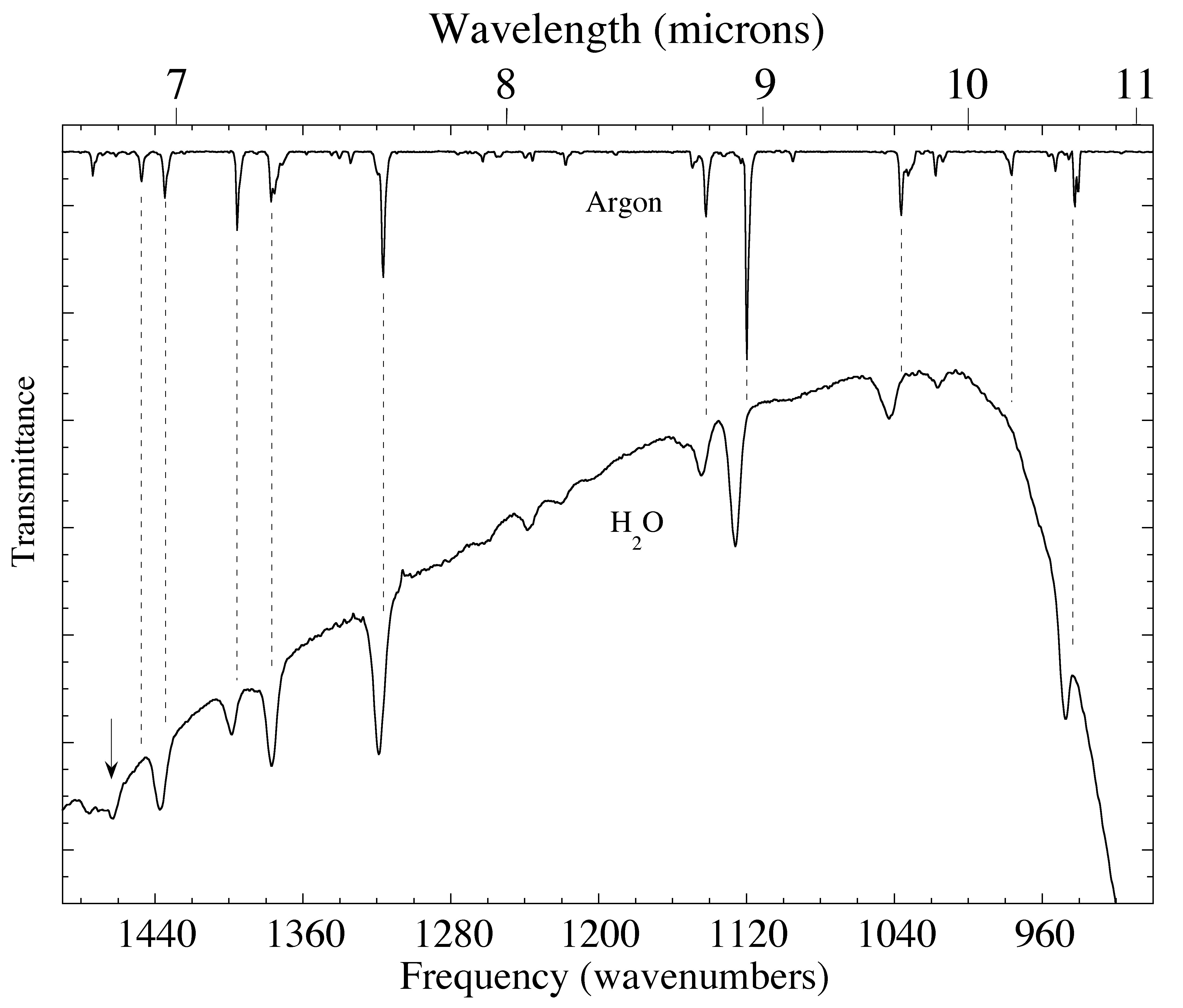
Figure 4. The 1490-900 cm-1 (6.71- 11.1 micron) IR spectra of quinoline isolated in an argon matrix (Ar/C9H7N > 1000; above) and in solid H2O (H2O/C9H7N = 20; below) at 15 K. The vertical hatched lines help to show that the positions of many of the peaks of quinoline in H2O are shifted to higher frequency relative to those in Ar matrix. An
arrow indicates the most extreme example of this, a feature in H2O that presumably corresponds to the peak near 1445 cm-1 (6.92 micron) in the argon spectrum.
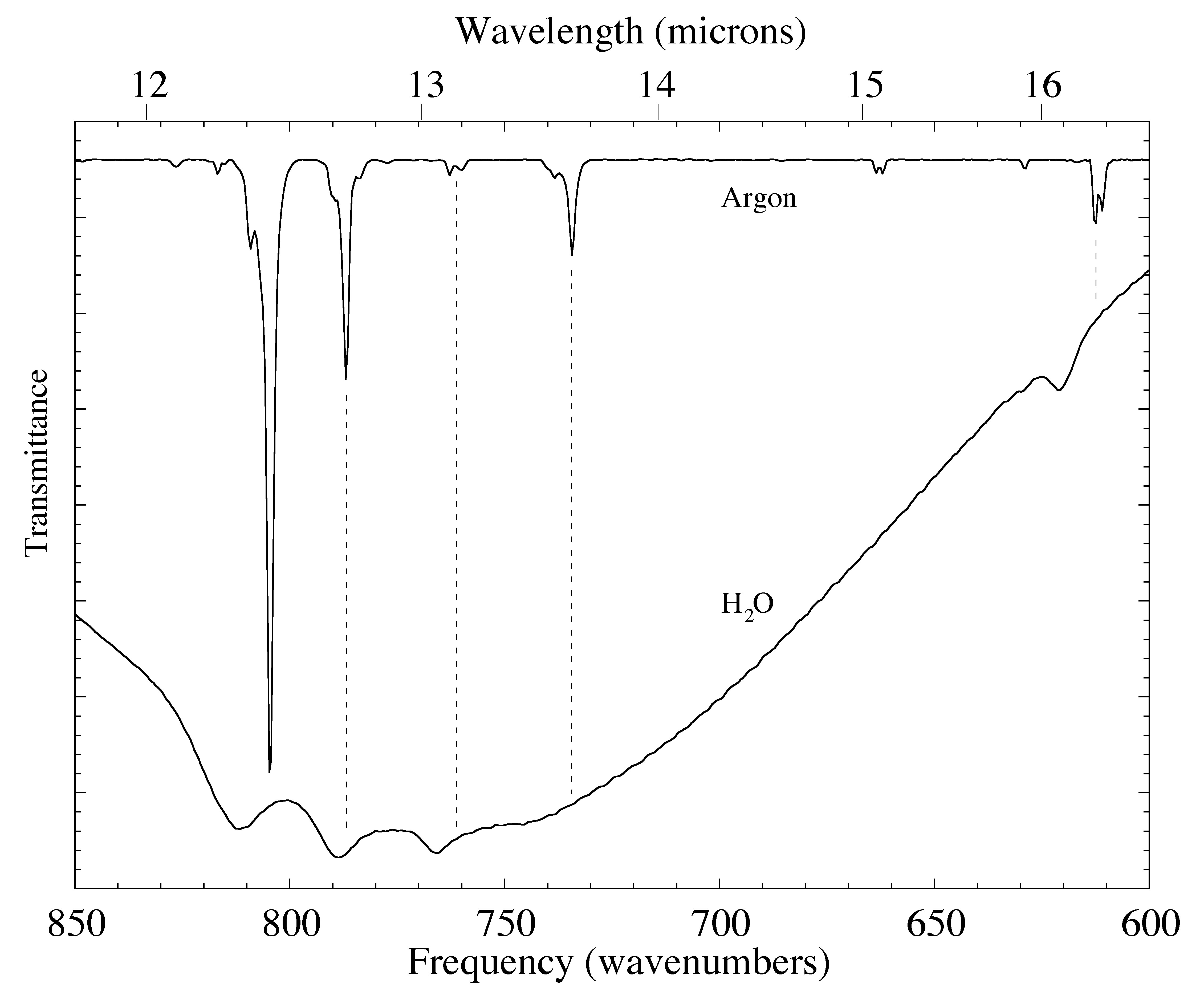
Figure 5. The 850-600 cm-1 (11.76-16.67 micron) IR spectra of quinoline isolated in an argon matrix (Ar/C9H7N > 1000; above) and in solid H2O (H2O/C9H7N = 20; below) at 15 K. The vertical hatched lines highlight shifts to higher frequency in the positions of absorptions corresponding to C-H out-of-plane bending motions of quinoline in the presence of H2O.
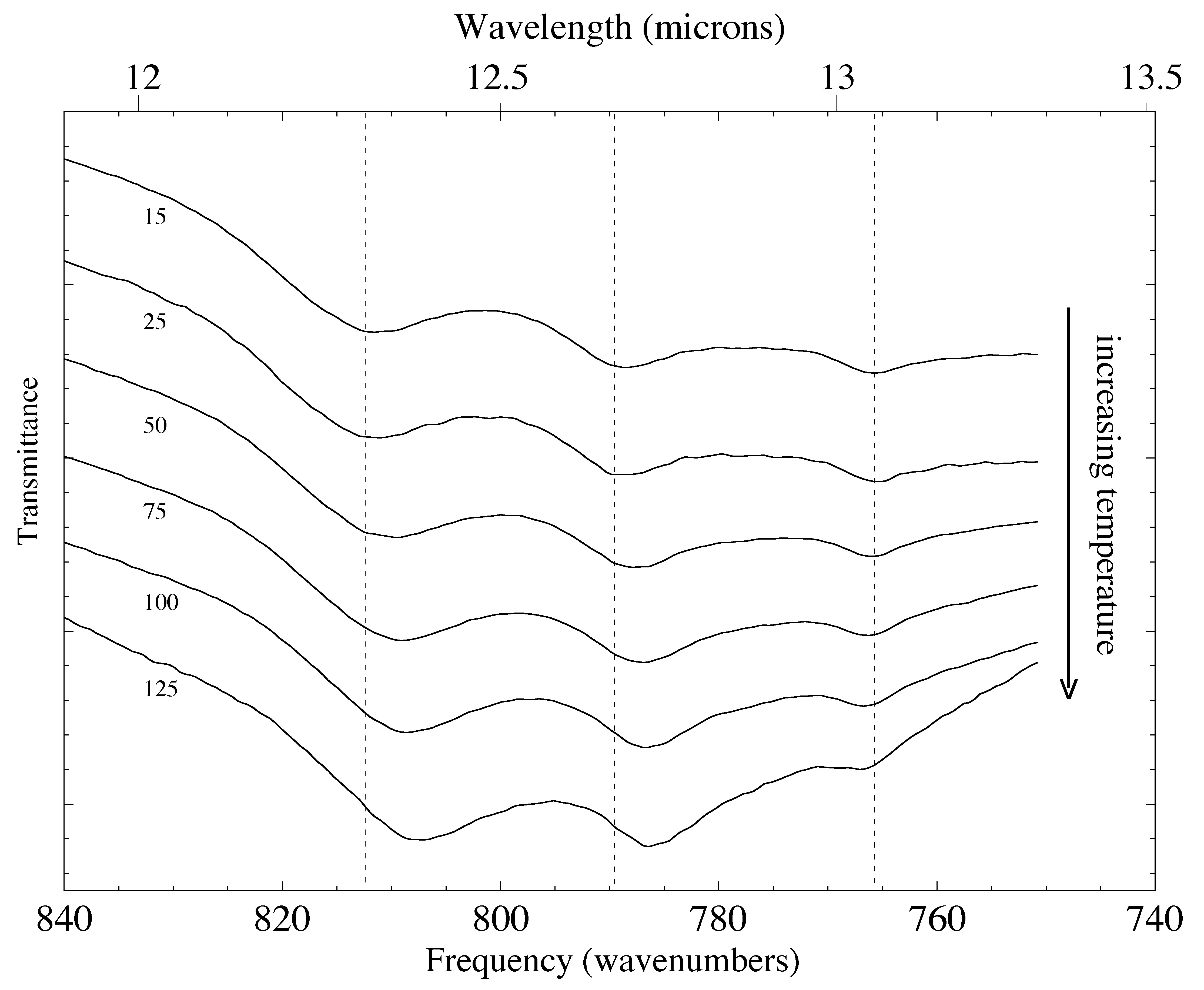
Figure 6. The 840-740 cm-1 (11.9-13.5 micron) IR spectrum of quinoline in solid H2O (H2O/C9H7N = 20) at six temperatures between 15 and 125 K. The positions of the C-H out-of-plane bending motions of quinoline depend slightly on temperature over this >100 K range.
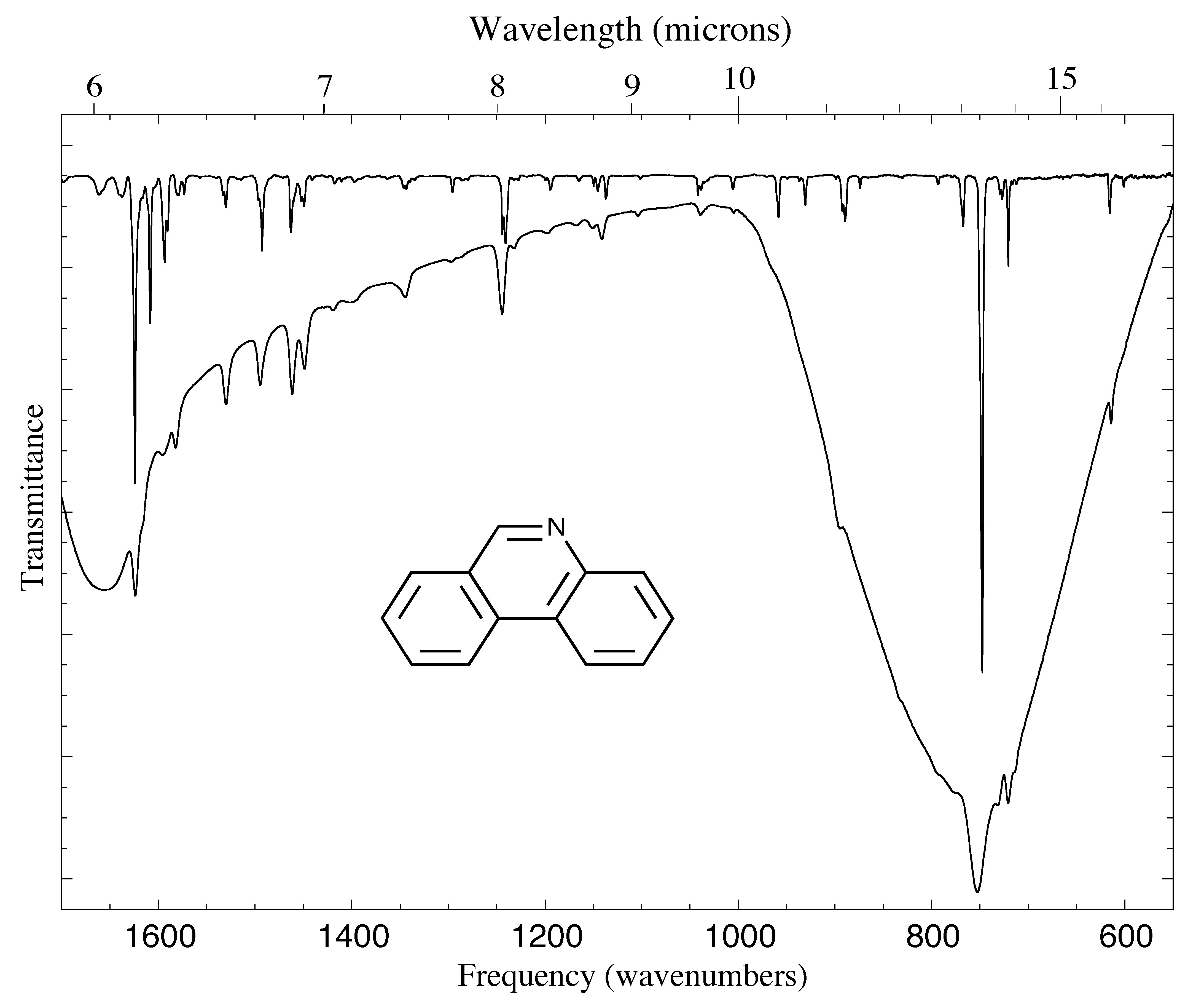
Figure 7. The 1700-550 cm-1 (5.88-18 micron) IR spectra of phenanthridine (C13H9N) isolated in an argon matrix (Ar/C13H9N > 1000; above) and in solid H2O (H2O/C13H9N > 10; below). The large broad absorptions in the (lower) spectrum centered near 1600, and 750 cm-1 (6.25 and 13.3 micron) are caused by the amorphous solid H2O at 15 K. The positions of the phenanthridine peaks are essentially unchanged. As was the case with the spectrum of matrix isolated
quinoline (Figure 3) the ensemble of peaks near 1600 cm-1 (6.25 micron) region of the upper spectrum contain significant contributions from matrix isolated H2O.
These figures are from "Laboratory Infrared Spectra of Polycyclic Aromatic Nitrogen Heterocycles: Quinoline and Phenanthridine in Solid Argon and H2O" published in the Astrophysical Journal, Volume 626, Issue 2, 20 June 2005, Pages 909-918 by Max P. Bernstein, Andrew Mattioda, Scott A. Sandford and Doug Hudgins. A PDF version of this paper is available. Please contact us for a copy for the full-text of the article if it is otherwise inaccessible online.
References
Sandford, S. A., Bernstein, M. P., and Allamandola, L. J., "The Mid-Infrared Laboratory Spectra of Naphthalene (C10H8) in Solid H2O", Astrophys. J., 607, p. 346, 2004
Bernstein, M. P., Sandford, S. A., and Allamandola, L. J., "The Mid-Infrared Absorption Spectra of Neutral Polycyclic Aromatic Hydrocarbons in Conditions Relevant to Dense Interstellar Clouds", Astrophys. J. Supp. Ser., 161, 53, 2005
Brooke, T. Y., Sellgren, K., and Geballe, T. R., "New 3 Micron Spectra of Young Stellar Objects with H2O Ice Bands", Astrophys. J., 517, p. 883, 1999
Chiar, J. E., et al., "The Composition and Distribution of Dust along the Line of Sight toward the Galactic Center", Astrophys. J., 537, p. 749, 2000
|